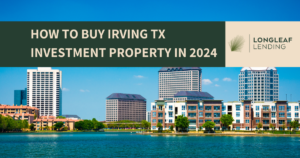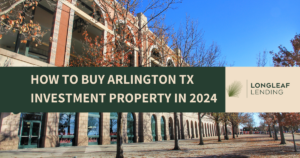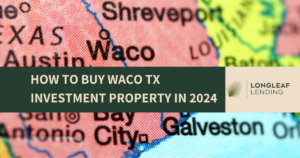With so much uncertainty surrounding the pandemic, it’s vital for real estate investors to keep up with the latest housing market trends.
So far, 2021 has been a complete seller’s market. Demand is through the roof. Property values are ballooning. And historically low mortgage rates are driving buyers into a frenzy.
But in real estate, the game can change fast — especially during a lingering pandemic.
Here are 10 trends you need to know about to stay ahead of the curve.
1. Building material costs are soaring
With pandemic-related supply chain issues and skyrocketing housing demand, building materials come at a premium these days.
Prices for lumber, copper, concrete, and steel have jumped the most. While lumber has nearly doubled in price over the past year, project and cost management companies like Cumming predict prices to drop back down by the end of summer.
Copper, on the other hand, is currently 49% more expensive than last year and is expected to remain higher than pre-pandemic prices.
Takeaway: When calculating the costs of a flip or rehab, use the most recent pricing data to account for price increases and avoid over or underestimating your expenses.
2. Supply and demand is shifting
It’s no secret that 2021 has been a strong buyer’s market. But how long will it stay that way?
During the worst of the pandemic, homeowners were more hesitant to list their properties in a time of such uncertainty.
Now, with vaccine rates steadily rising, the number of listings is slowly creeping up. Realtor.com reports new listings increased 9% during the week of July 24, and the number of new sellers is consistently trending up compared to one year ago.
While housing supply is steadily increasing, buyer demand may have reached its peak. According to the Mortgage Bankers Association, the overall number of mortgage applications continues to increase, but applications for purchase loans have declined for the past three months.
The recent tapered-off demand may be due to the ridiculously high prices homes are currently fetching.
Takeaway: If this shift in supply and demand continues, housing prices may soon reach their peak.
3. Competition is brewing
While some homebuyers have stepped out of the arena due to price growth, there is still stiff competition.
Nowadays, you’re not just competing against other families looking for a new home. You’re competing against big institutional capital buying up single-family homes left and right.
Companies like Opendoor and Offerpad have basically created a big “easy” button for sellers. Those who want a quick, hassle-free deal are offering their properties to these platforms instead of putting them on the market.
Takeaway: As more of these companies move into the space, it may be challenging to find underpriced properties. These opportunities often arise when a seller is desperate to offload quickly. And selling to a home buying company could be more convenient than jumping through hoops with a private buyer.
4. Low mortgage interest rates won’t stick around forever
If you’re kicking yourself for not locking in a record-low interest rates in 2020, you’re not out of luck yet.
On August 3, rates hit rock bottom for 2021— down to 2.625% for a 30-year fixed term, according to Credible.
Some economists believe rates will start to creep up as vaccines roll out, workers get back to the office, and the economy rebounds. But if the pandemic takes an unexpected turn for the worse thanks to the Delta coronavirus variant, rates may stay put for a while.
For now, the federal reserve is holding firm with its low rates.
Takeaway: Since nobody can predict how long these low rates will last, try to lock in a low rate on a mortgage, refinance, or long-term rental loan while you can. At Longleaf, we offer the lowest long-term investor rates with our rental loans.
5. Home prices show signs of normalizing
We’ve already touched on a few factors that determine price swings in the real estate market — supply and demand, competition, mortgage rates, and the economic outlook as a whole.
Despite the pandemic, housing prices continue to soar. In June, the median price for active listings was $385,000, according to Realtor.com. That’s 12.7% higher than last June.
That said, while home prices have increased overall, so has the number of home price reductions. Housing data from Redfin shows that 4.1% of listings dropped their prices in the weekend ending on July 11. They also report plateaus in houses sold over listing price, houses sold within a week, and the median number of days to sell.
All of this may indicate that the red hot market and intense bidding wars may have reached a peak.
Takeaway: If you’re trying to time the market to sell at peak prices, keep a close eye on trends. As supply increases, prices seem to be cooling off.
6. Housing affordability is falling
Just because home prices increase doesn’t always mean they’re less affordable. To determine housing affordability, you also have to factor in the impact of inflation, mortgage rates, and increasing salaries.
The First American Real House Price Index shows that for the past two years, housing has actually become more affordable, despite the higher sales price.
But in May, we hit a tipping point. For the past three months, consumer house-buying power started to decrease.
This is another sign that home values are starting to max out.
Takeaway: If you’re waiting to sell, you might not want to wait much longer. Also, the First American Real House Price Index is a useful tool to assess housing prices in the context of the greater economy.
7. Mortgages are more recession-proof (for now)
Under normal circumstances, recessions are opportunities for investors to pick up foreclosures and distressed properties. Thanks to foreclosure bans, this hasn’t been the case during the pandemic so far.
However, the foreclosure moratorium expired on July 31, and lenders can now start processing foreclosures.
That said, the government still offers aid to eligible homeowners with financial hardship, so don’t expect foreclosures to flood the market right away.
Takeaway: If you’re looking for distressed properties to invest in, keep your eyes peeled. They may start hitting the market in the near future.
8. The real estate bubble isn’t ready to pop
You may be worried that the surge in home prices is leading to a repeat of 2008.
This doesn’t seem to be the case. And it comes down to why house prices are increasing.
The last bubble burst when low interest rates and irresponsible lending inflated prices.
While there are many factors influencing today’s prices, much of it comes down to supply and demand. The U.S. population has increased by 25 million since 2008, and a huge portion is Millennials and first-time homebuyers entering the market. Currently, the housing inventory cannot support this high demand.
Since 2008, there has also been a trend towards fixed-rate mortgages over adjustable-rate mortgages. With most borrowers locked into low fixed rates, an unexpected bump in interest rates won’t cause a jarring increase in mortgage payments.
Finally, lenders have tightened up standards since the last crash. While these standards make it harder to get approved for a mortgage, they reduce the risk of default.
Takeaway: We are unlikely to experience a repeat of the 2008 housing market crash, partly thanks to stricter lending standards. If you don’t want to jump through time-consuming hoops to borrow from a bank, Longleaf can fund your project quickly.
9. Landlords are making bank
Rent prices are skyrocketing, and it’s a great time to be a landlord. According to Realtor.com, 44 of the 50 largest metro areas are experiencing historical highs, with the median rent is up 8.1% compared to last year.
Normally the median rent varies less than 1% from one month to the next. But in May and June, prices shot up 3.0% and 3.2%, respectively.
In other rental news, the national eviction ban expired on July 31, but renters are still protected in many states and counties.
The hope is for more tenants to recover from their financial hardships as vaccines roll out and people return to work.
Takeaway: Now is a good time to be in the rental property game. To learn how to get started, check out our guide on long-term rental loans.
10. Real estate investors are on the move
Investors are taking advantage of the new housing market trends. Fueled by high rental demands and soaring property prices, investors snatched up $49 billion worth of residential real estate In the second quarter of 2021, according to Redfin.
Two times as many homes were purchased by investors in Q2 2021 compared to Q2 2020.
With the surge in remote work, many people are fleeing expensive hubs like San Francisco, Los Angeles, and New York towards more affordable, mid-sized cities. This influx in housing demand adds even more fuel to the surging home prices.
The most popular city for investors is Phoenix, Arizona, where they make up almost a quarter of home sales. Austin is another hot market, where the median home prices reached a record high of $482,364 in July.
Takeaway: Investors are profiting from sky-high rental prices and the consistent increase in property values. That said, trends show that prices could be reaching their peaks.
Ready to invest?
Whether you’re interested in a quick flip, BRRRR, or long-term rental investment, Longleaf can get your next project funded.
We offer low, fixed-rate long-term rental loans and can close hard money loans in as few as two days.
Check out our program details or submit your request here.









